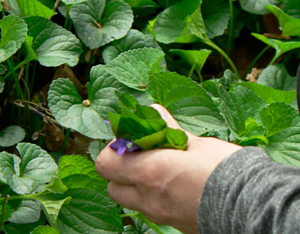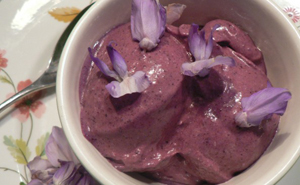By Abra Pappa for Nutritious America
Living in an urban environment one can frequently go for long periods of time without getting intimate with nature. Maybe even a lifetime. It is rare to see urbanites digging in the ground or planting a garden. And when envisioning a Mecca of wild edible plants, most likely a concrete jungle does not come to mind.
Think again.
As it turns out, Manhattan’s Central Park is home to more than 100 species of wild edible plants. Edible and free!
It takes an expert in what is called foraging, searching for food sources, to point out which species are edible and which are not. I met a foraging expert this Earth Day, his name is Wildman Steve Brill. He has been offering foraging tours of Central Park for nearly 30 years.
I joined Wildman for one of his four hour Central Park tours where around 30 participants plucked plants right from the ground and popped them in their mouths, and sampled flower buds off of a low hanging branch to savor their flavor profile. Spring is the season of greens, and small budding flowers. In four hours we all consumed plenty of wild greens and small budding flowers.
I would easily consider myself a “foodie” (although I am not fond of that word.) I have spent my nearly fourteen years of living in New York City exploring the vast food scene and culture of this heaven for food loving enthusiasts. For anyone that cares to listen, I am ready with knowledge of the best ramen bowl in town, the truest farm to table experience. I love exploring which chefs are dedicated to local ingredients and sustainable food concepts. I love the flavor and life cycle of food. As a foodie and health movement fanatic the idea of foraging for wild edible food in my back yard, which for me is Central Park, is simply glorious. After my meeting with Wildman Steve I am now aware of this brave new world of the truest form of “local” food.
Wildman Steve makes sure to point out on his tour that the edible plants he encourages his tour participants to “forage” are all vastly renewable resources, and by picking them we are only encouraging them to continue growing. There were a few edible plants he pointed out we were told not to pick because it would disrupt the ecosystem.
As an added bonus, Wildman Steve turns out to be quite the chef. He sells a beautiful vegan cookbook with hundreds of recipes using the wild plants and flowers found in the park. With each new edible introduced, Wildman offers up a variety of cooking suggestions; toss those red bud flowers into cornbread, or cook and puree the bitter doc greens with Indian spices to create a saag, or take the wisteria blossoms and freeze them into ice cubes for a festive party drink.
I left this foraging adventure fully inspired to create my own wild edible masterpiece. I was most enraptured by the early spring buds and flowers. A wild flower raw ice cream was in order. I simply blended wild wisteria blossoms and common blue violet flowers with frozen wild blueberries and a base of cashew creme ice cubes. The flavors were incredible and truly the most beautiful ice cream I have ever laid my eyes on.
 Read the full recipe for Wild Flower Raw Ice Cream here.
Read the full recipe for Wild Flower Raw Ice Cream here.
If you happen to be in New York City I highly recommend a Wildman foraging tour of Central Park. If you live in other parts of the country Wildman offers a Wild Edible App available at the iTunes store. Wherever you live there is most likely wild edible plants just waiting to be foraged.
Also Read:
Container Gardening Ideal for City Living
